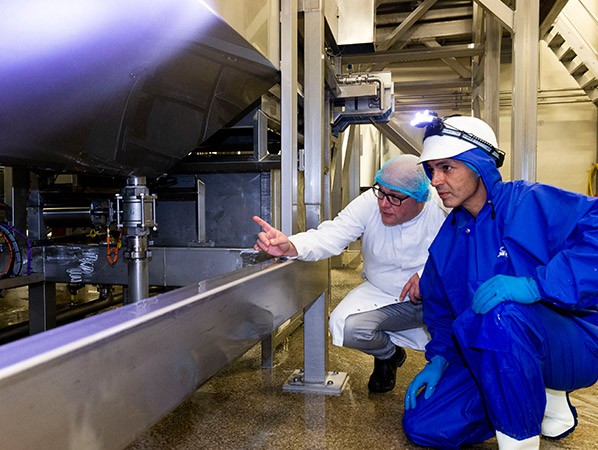
We think about sustainability, alternative energy sources and a circular economy. Sharing knowledge is high on the agenda. We look for cooperation in order to strengthen each other. “Cooperation is also the keyword for ensuring and optimising hygiene”, says Gert Visscher, director/owner of Eco2Clean.
“Cleaning is an integral part of the business process. Once a company is convinced of that, good cooperation between production, TD and cleaning becomes possible. Continuous attention from the company management and monitoring the established structure are crucial for this”, says Gert.
In practice, he sees many companies struggle with cleaning due to a lack of knowledge, time and structure. “Cleaning is told to complete their work in the shortest possible time. At a new location, there is little to no instruction from the production location on how to perform the cleaning. A virtually impossible task and a vicious circle. We sometimes felt like we were not being heard, but there are more and more production companies that are saying goodbye to these short-term politics”, he finds. “With convincing evidence: continuously good bacteriological results and a peaceful environment. Unfortunately, it sometimes takes a recall to really get a company’s attention.”
Managing food safety risks while also reducing cleaning costs does not seem realistic, but it is possible, says Gert. When discussing how a company can organise the assurance of hygiene, Eco2Clean applies a practical, sober approach. “First, we ask a number of questions. How clean an object or part should be depends on the type of product. Does it concern products that are sensitive to contamination? Do micro-organisms in the room where the products are located have little to no chance of growth? The degree of contamination of the product itself is also important. What does the rest of the chain look like? Are there any steps between the production location and consumers where a possible contamination can be undone? Controlling and optimising hygiene and cleaning processes in the food sector is our strength. Our challenge is to find the right balance between risks and costs. We ask our clients to look at cleaning as a whole and talk to them so that they can make conscious choices.”
The purpose is to achieve optimal hygiene by sharing knowledge and knowhow with the producer and the cleaning company. Gert: “You can’t have one without the other. As a knowledge expert in the field of hygiene, we play a connecting role between the producer and the cleaning company. We developed the online registration system HIMS for that purpose, but it only provides added value when combined with a clear communication and consultation structure”, he cautions. “When production, cleaning and the technical department are constantly communicating, current bottlenecks can quickly be identified and resolved. In periodic meetings, the frequent analyses are discussed and agreements are made about improvements to be implemented. This method avoids a lot of miscommunication and static. Our HIMS app, which is used on the work floor, makes this communication even simpler and faster.”
The hygiene inspections that the hygiene specialists from Eco2Clean regularly carry out for their clients, also provide insight into the degree of cooperation between all parties. The inspection report is discussed in a broad meeting. This meeting involves all relevant parties: the company management, production management, quality department, TD, cleaning company or own cleaning employees and Eco2Clean. Visscher emphasises: “Our hygiene inspection report is not meant to scold one of the parties. Cooperation is the keyword. By discussing this in a broader context, we hope to convince everyone of the importance of working together.”
Recall facts of 2018 listed
• In the last quarter of 2018, in Europe, 972 recalls and warnings were registered in the food & beverage sector: 13% more than the 860 in the third quarter, and the third highest number in the past 9 quarters.
• Nuts, nut products and seeds are at the top of the list of products that were removed from shelves the most (148), followed by fruits and vegetables (131) and fish and fish products (97).
• In most cases, the recalls were due to a bacterial contamination (213), followed by chemical contaminations (163) and aflatoxins (moulds, 115).
• Most report (33.4% came from the Netherlands, Italy and the United Kingdom. Most recalls and warnings concerned products from Turkey (82), followed by Poland (45), the US and France (both 43) and the Netherlands (40).
Source: the European Recall & Notification Index Q4 2018 from Stericycle Expert Solutions
Source: © Vakblad Voedingsindustrie 2019